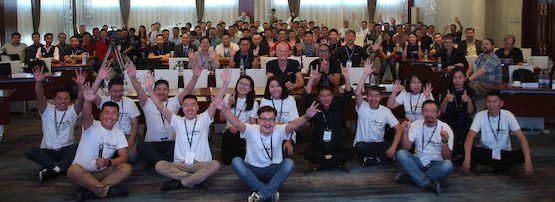
The keys to holding a successful NOG event is open communication and productive collaboration among the organizing team.
This was the opinion of Tugsorshikh Badarch, one of the very satisfied members of the mnNOG Coordination Committee, who recently organized Mongolia’s first Network Operators Group meeting, mnNOG 1.
Held in the capital, Ulaanbaatar, from 16 to 21 September, the one-day conference and five days of workshops attracted more than 170 attendees; a result that exceeded the Coordination Committee’s wildest expectations, given the concept of a NOG was new for a relatively fledgling operational community.
“We had a sudden influx of last-minute registration requests as the word spread and had to close the registration days before the conference date,” said Tugsorshikh.
“Perhaps more pleasing was how active and confident the community was asking questions from and providing feedback to our international and local speakers. It was something we weren’t sure they would ‘get into’ given the less than cooperative culture between the attendee’s organizations.”
Keynote presentations were given by APNIC’s Chief Scientist, Geoff Huston, who spoke on DNS Privacy and DoH, and Enkhbat Dangaasuren, who shared his experience with establishing and developing the Internet in Mongolia. These set the tone for the rest of the day with half of the presentations given by local speakers.
This was a key feature for APNIC’s Tashi Phuntsho, who participated as a speaker and trainer, as well as a program committee member.
“Half of the conference speakers were locals talking about real operational issues they faced and overcame, which, from my experience with other NOG events, is really valuable to the local crowd as it sets an example of the importance and benefits of sharing and cooperating as a community,” said Tashi.
“The local relevance was nicely wrapped up by a panel discussion on ‘Network Redundancy, Resilience, and Optimization’ with panellists from ISPs and the regulator discussing duplication of national infrastructure and how to efficiently share it.”
Reiterating what she had said when writing on the origins and preparations for the event earlier in the year, Tugsorshikh said “the speakers who spoke in Mongolian definitely allowed locals to participate more actively and contribute to community development,” adding that it was a key takeaway for the Coordination Committee.
Read: Preparations in full swing for first Mongolia NOG meeting
Other lessons learned included keeping the conference purely technical, and having open communication and collaboration within the organizing teams and with the community.
“It was a challenge to get everyone on board regarding the importance of keeping the event purely technical and communicating the idea of an open and community-based initiative to local organizations and regulators. However, we feel that the community now sees the merit in it, and it will continue to be a key feature for future mnNOG events,” said Tugsorshikh.
Although mnNOG1 ended less than two months ago, the Coordination Committee have already held discussions about mnNOG 2, which they plan to hold in the first week of May 2020.
“Holding it before the summer holidays will be much more convenient for organizers and participants. We plan to have early-bird rates to get a better gauge of registration and announce a Call for Volunteers in the coming months — we are sure there will be many active volunteers who will happily join the current members.”
On behalf of the organizing team, Tugsorshikh wishes to thank “all the sponsors of mnNOG 1, which would not have been possible without their support; the Programme Committee and Coordination Committee team members for collaborating effectively, being so encouraging, and their commitment to organizing the event; and the workshop instructors from APNIC and NSRC, as well as Philip Paeps from FreeBSD.”
The views expressed by the authors of this blog are their own and do not necessarily reflect the views of APNIC. Please note a Code of Conduct applies to this blog.
